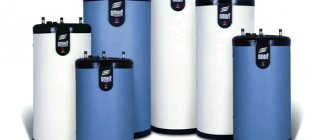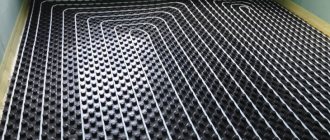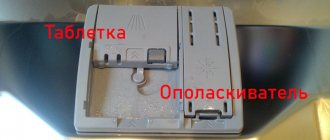Several years ago, a new type of heating called electric-water heated floor appeared on our market.
We all know well about electric and water heated floors separately. Each of them has its own advantages and disadvantages.
What kind of miracle is this – electric water heated floor? Is it really capable of combining all the advantages of two types of heating?
Let's look at exactly those parameters that are most often described in advertising brochures as obvious advantages, due to which you, in fact, should make your clear choice in favor of the new product.
Peculiarities
What exactly is an electric water heated floor? Essentially, it is a cross-linked polyethylene pipe with a heating cable inside.
Tube diameter 20mm, thickness 2.5mm. The tube itself is filled with non-freezing liquid. To prevent thermal expansion, an expansion joint is also placed in the pipe.
The entire structure is reliably sealed on both sides and has a given length (7m-14m-21m-28m-35m-42m-56m-70m-84m).
The price of this entire system is significantly more expensive than conventional heated floors. And here a logical question arises: what are we overpaying for and is it worth it?
Retains heat longer
Since there is a coolant inside the pipe, the entire system supposedly retains heat better than a conventional heating cable under a screed.
Specifically, two hours longer. For simple heated floors this time is 2 hours, for electro-fluid floors – 4 hours.
That is, so that you understand, the surface area of the floor does not change in any way, nor does the material and thickness of the screed.
The cable in the pipe gives off heat to the screed; a regular heating cable without a pipe also gives off heat to the screed.
In both cases, the floor warms up exactly the same. And only by adding liquid to the tube, in some magical way the indicators should change several times.
Roughly speaking, you gave the liquid 1 kW of heat and what should it do with it? Transfer to the floor or save, or maybe save 1 kW and transfer 1 kW?
What a miracle system with an efficiency of 200%!
When a room with its heat loss conditionally needs 1 kW/h of thermal energy to maintain 25C, then it makes absolutely no difference where you get this kW (gas, electricity, solid fuel) and how you transfer it - by convection or infrared radiation, underfloor heating, water or electric, fireplace, radiators or heat gun!
If you take a d-20mm pipe (2.5mm thick) and calculate the total volume of coolant inside it, for a standard length of an electro-fluid system of 56 meters, you get approximately 10 liters.
As an experiment, place a bucket of water heated to 40 degrees in the room and let it cool to 20 degrees.
Even one domestic cat with its stable body temperature of 38-39C will bring much more warmth into your home











